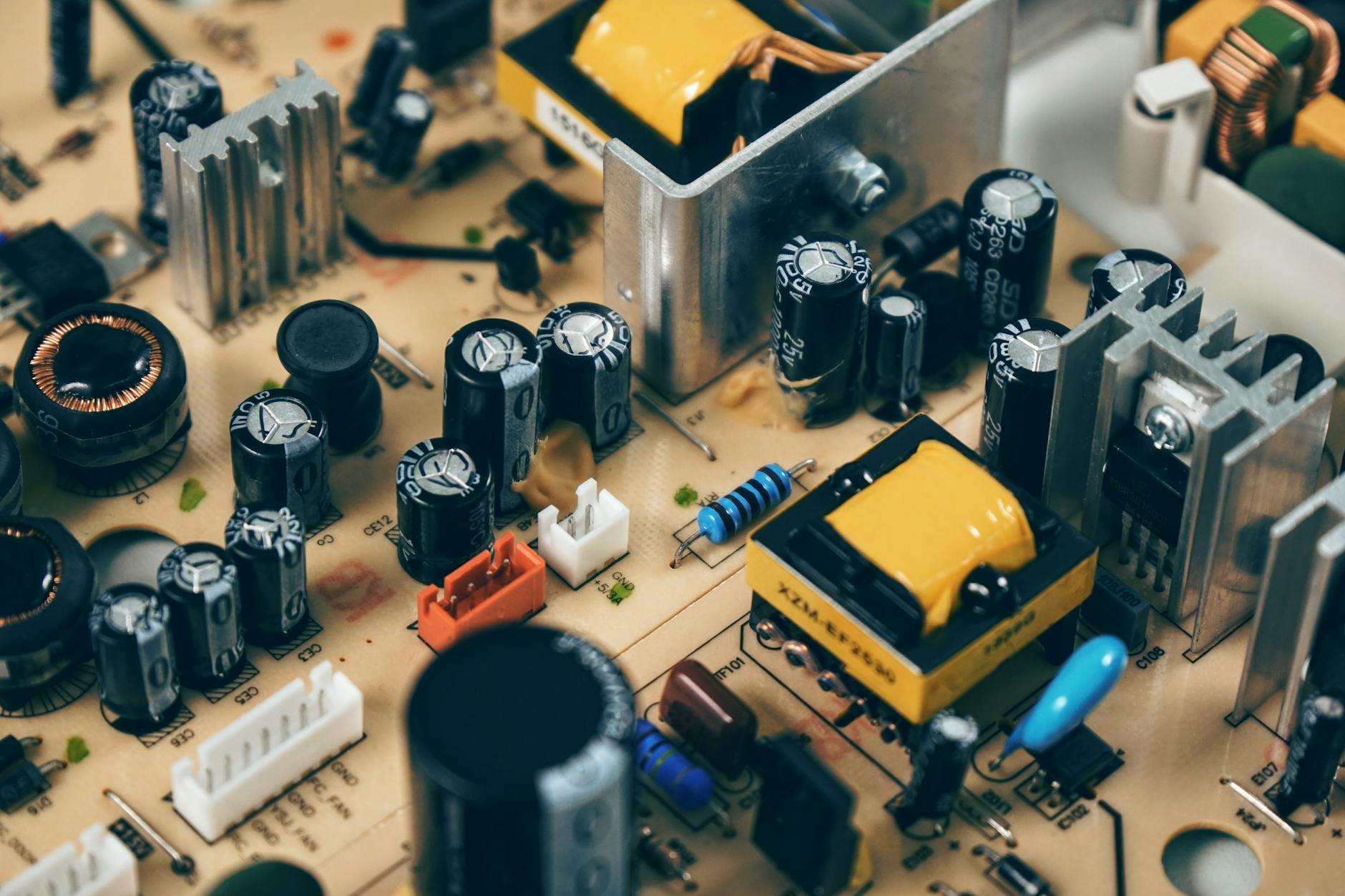Shaping Tomorrow: A Positive Look at Emerging Semiconductor Technologies Comparison
Growth of Semiconductor Industry
Size Projection by 2030
Get ready for some explosive growth in the semiconductor biz! According to Markets and Markets, our favorite microchip makers might just hit $1 trillion by 2030. That’s a whole lotta circuits. Slap five with all those bigwigs pouring cash into making more gizmos and gadgets tick—they’re the backbone of everything from AI wizardry to your trusty smartphone. And with about 70 spanking-new semiconductor plants sprouting up worldwide by the end of the decade, there’s no shortage of action in the pipeline (ITIF).
Here’s a quick peek at the numbers:
| Year | Projected Industry Size (USD) |
|---|---|
| 2020 | $527 billion |
| 2030 | $1 trillion |
Shifting to Compound Semiconductors
Move over silicon, there’s a new sheriff in town—compound semiconductors. AI chips and machine learning need juice that old-school silicon can’t quite deliver, and that’s where compound semiconductors step in, promising smooth sailing for anything from powering up electric rides to making sure our power grids are as smart as a whip (Markets and Markets).
Compound semiconductors bring their own bag of tricks:
- Efficiency: Think gallium nitride (GaN) and silicon carbide (SiC)—these materials add a mighty punch of efficiency to power and RF tasks.
- Performance: They’re like the Olympic athletes of semiconductors, cruising through high-frequency, high-power, and sizzling-hot applications with ease.
- Eco-Friendliness: As we go green, these chips help our EVs zoom farther and keep our renewable energy flowing sleekly through smart grids.
Check this out:
| Feature | Silicon (Si) | Gallium Nitride (GaN) | Silicon Carbide (SiC) |
|---|---|---|---|
| Bandgap Energy (eV) | 1.1 | 3.4 | 3.3 |
| Electron Mobility (cm²/V·s) | 1500 | 2000 | 650 |
| Breakdown Electric Field (MV/cm) | 0.3 | 3.3 | 2.8 |
| Thermal Conductivity (W/cm·K) | 1.5 | 1.3 | 4.9 |
This fresh shift in tech is shaping the future for semiconductors, riding the wave towards eco-friendliness and peak performance (Forbes). Curious minds can explore more in our pieces on upcoming semiconductor marvels and worldwide semiconductor research trends.
Supply Chain Challenges
Impact of Pandemic
Boy, did things get wild in the semiconductor biz during the pandemic! Remember when you couldn’t get your hands on a new car or your favorite gadgets? Well, that’s because the chip production got as tangled as a pair of headphones at the bottom of your backpack. The demand went through the roof, especially in areas like cars and tech toys, and the whole setup just couldn’t keep up.
Here’s a peek at how badly production took a hit:
| Sector | Production Impact (%) |
|---|---|
| Automotive | -40 |
| Consumer Electronics | -25 |
| Industrial IoT | -15 |
| Communication | -10 |
Need for Resilient Supply Chains
So, we’ve learned the hard way that we need to build better safety nets and spread our chip production wings. To dodge future meltdowns, there’s no skipping out on big spending and some keen planning. Remember that CHIPS for America Act in August ’22? It’s all about beefing up local chip-making with a cool $52 billion earmarked for research and boosting production. Plus, there’s $10 billion going towards a hot new National Semiconductor Technology Center. There’s even dough set aside for things like packaging, materials, and testing setups.
Here’s how the money’s being spread around:
| Investment Area | Funding ($ Billion) |
|---|---|
| Semiconductor Research & Production | 52 |
| National Semiconductor Technology Center | 10 |
| Advanced Packaging Technologies | 2 |
| Advanced Materials | 2 |
| Advanced Testing & Assembly | 1.5 |
But it’s not just us. Countries all over are getting creative with making their supply chains tougher. Over in China, companies are churning out the old-school chips like there’s no tomorrow, though they play the budget game more than the breakthrough one.
If you’re curious about what’s coming up in the world of chips or what the future holds, be sure to sneak a peek at our worldwide semiconductor industry outlook and our insights into near-future semiconductor innovations.
Emerging Technologies
In the fast-paced world of semiconductors, two tech wonders are grabbing our attention: neuromorphic computing and quantum computing. These game-changers are set to shake things up in ways that could totally flip semiconductors on their heads.
Neuromorphic Computing
Neuromorphic computing takes its cues from the human brain—aiming to work like our noodle does. It’s all about letting computers think and process info way more efficiently, which is a goldmine for ramping up artificial intelligence (AI).
In this setup, neural networks are designed to mimic how those squiggly neurons and synapses do their dance in our brains. We’re talking about major upsides here, like superb parallel processing and energy savings that blow traditional computing out of the water. According to Markets and Markets, tapping into neuromorphic computing could really give the semiconductor sector a serious boost.
Let’s break down the key perks of neuromorphic computing:
| Advantage | What’s Cool About It |
|---|---|
| Less Energy Use | Works like a brain, sips power |
| Better Multitasking | Handles lots of jobs at once like a champ |
| Grows Easily | Scales up for big, tricky AI tasks |
We’re diving headfirst into these tech marvels, and it’s a smart move to stay clued in on near-future semiconductor innovations to see what’s in store for us all.
Quantum Computing Opportunities
Quantum computing is another rocket ship heading straight for the semiconductor scene. Unlike the boring old ones and zeroes of regular computing, quantum machines rock the qubits—where they can be in loads of states at once, all thanks to the magic of quantum mechanics.
This leap could cause big waves in areas like cracking codes, discovering new materials, and simulating insanely complex systems. Quantum computing’s unique talents make it capable of tackling problems that leave classic computers scrambling. As Markets and Markets point out, quantum might not just enhance semiconductor performance but open up a whole new world of possibilities.
Here’s how traditional stacks up against quantum:
| Feature | Old School Computing | Quantum Computing |
|---|---|---|
| Main Unit | Bit (just 0 or 1) | Qubit (0, 1, maybe both) |
| Speed | Slow on tough nuts | Way quicker |
| Uses | For everyone | Best for things like cryptography and new material discovery |
This shift could morph the industry, creating a genuine quantum buzz that disrupts semiconductor trends. You can figure what’s coming next by checking out our pieces on semiconductor industry trends worldwide and global research-based semiconductor trends.
By keeping our eye on these rising stars, we’re positioned to make the most of the semiconductor industry’s exciting future—tackling challenges head-on while maximizing every opportunity these cool tech advances offer.
Future Trends in Semiconductor
We’re diving into a treasure map of the semiconductor industry’s future, where some big ideas are popping up. Two exciting things catching our eye are neuromorphic computing and quantum computing. Let’s spill the beans on why these are the next big things.
Neuromorphic Computing Growth
Neuromorphic computing’s all about mimicking how your noggin works. Imagine tech that thinks and learns like the human brain, soaking up artificial intelligence to level up its smarts. We’re talking about game-changing uses, from processing data on the fly to building super smart AI (Markets and Markets).
Why Neuromorphic Computing Rocks:
- Zippy Processing: It zips through info like your brain.
- Power Saver: Slashes energy usage compared to the old-school computing we all know.
- Flexible Usage: Great across different sectors, whether it’s robots or self-driving cars or whatever’s next.
| Trick | Treat |
|---|---|
| Brain Copycat | Supercharged AI powers |
| Fast as Lightning | Handles data like a champ |
| Energy Saver | Cuts down on the juice |
With all these perks, it looks like neuromorphic computing is on track to spearhead near-future semiconductor innovations.
Quantum Computing Revolution
Quantum computing is like the cool wizard in the room. It doesn’t just see data in zeros and ones like your average computer. With quantum bits (qubits), it cooks up solutions to complex problems way faster. This is a game-changer for spaces like cracking secret codes, finding funky new materials, and simulating crazy complex systems (Markets and Markets).
Quantum Computing Hot Spots:
- Code Cracking: Uncrackable security for those secret notes.
- Cool Materials: Speedy discovery of wild new materials with extraordinary traits.
- Top Notch Models: Models complex stuff with better precision.
| Use | Benefit |
|---|---|
| Codes and Ciphers | Unbeatable security |
| Material Magic | Speedy discoveries |
| Mega Models | Super accurate simulations |
These wild abilities push quantum computing to ignite a quantum computing revolution in the semiconductor playground.
Pop in to see where all this is headed by checking out our in-depth guide on global research-based semiconductor trends and the latest worldwide semiconductor industry outlook. We’re just brushing the surface here, the future’s gonna be a wild ride!
Beyond CMOS Technology
Alrighty, let’s jump into the world of semiconductors, where tech nerds are buzzing about Beyond CMOS tech. Now, CMOS (Complementary Metal-Oxide-Semiconductor) has been the hero of our electronic saga for quite some time. But, like all good things, it’s gotta evolve. That’s where Beyond CMOS steps up, ready to shake things up and redefine what’s possible with semiconductors.
Niche Applications
Beyond CMOS is a bit like the new kid in school, full of potential but not totally there yet (IEEE IRDS). Researchers are burning the midnight oil to create what’s next in tech, setting sights on some wild possibilities. However, right now it mainly gets a test run in specialized spots.
We’re talking about applications like:
- Advanced Memory Solutions: These bad boys are all about speed, packing more memory in without sucking up tons of power. They’re stepping in where SRAM and flash memory can’t quite cut it anymore.
- 2.5D and 3D Chip Stacking: Imagine stacking chips like a game of Jenga, but instead of collapsing, it takes your tech to the next level. Better performance and efficiency are the names of the game (McKinsey).
These niche uses are just the beginning, showcasing the potential to push tech beyond CMOS’s trusty capabilities.
Integration Challenges
Of course, bringing Beyond CMOS into the mainstream isn’t just a walk in the park. Researchers are wrestling with some serious technical head-scratchers to get these cool innovations into everyday gadgets.
- Compatibility Issues: Getting Beyond CMOS parts to play nice with the gear we’ve got? Not as easy as pie. Major tweaks and tons of testing are needed.
- Manufacturing Complexity: Crafting this new tech isn’t cheap or easy. We’re talking about some real intricate processes that take more dough and time than the old ways.
- Temperature Sensitivity: This tech is a bit finicky with temperature swings, which means keeping performance steady is tricky.
- Scalability: Cranking out Beyond CMOS tech at a scale that meets everyone’s demands is a big task.
Even with the challenges, the promise is too juicy to ignore. Keep an eye on this tech because it could be steering us toward the next big thing in semiconductors.
| Challenge | Description |
|---|---|
| Compatibility Issues | Getting new tech to mesh with existing setups |
| Manufacturing Complexity | Requires fancy processes and bigger budgets |
| Temperature Sensitivity | Acts differently with temperature changes |
| Scalability | Need to make lots, not a little |
Beyond CMOS tech is all the rage among those tech-savvy folks. If you’re curious to see how it’s gonna shape up the future, check out our global research-based semiconductor trends and peek at what’s next in the worldwide semiconductor industry outlook.
Semiconductor Memory IP Market
Growth Rate Outlook
The semiconductor memory IP market’s future is looking bright, folks. From 2020 to 2025, we’re anticipating a whopping growth rate ramping up to over 12% each year. Yeah, you read that right—there’s a big boom on the horizon, and it’s mainly thanks to the need for super-fast computers, savvy AI, and apps that love a lot of data.
| Year | Growth Rate (%) |
|---|---|
| 2020 | – |
| 2021 | 12 |
| 2022 | 12 |
| 2023 | 12 |
| 2024 | 12 |
| 2025 | 12 |
These numbers are kinda like your crystal ball. They’re showing juicy chances for strides and new doorways opening up in the semiconductor scene. Anyone with their eyes on global chip trends will see these as a goldmine for planning their next big moves and money decisions.
Development Potential by 2025
Looking ahead to 2025, there’s a bunch of reasons to be excited about where the semiconductor memory IP market’s heading. First off, the tech world’s groove with stuff like the Embedded Multidie Interconnect Bridge (a.k.a. EMIB) is set to shake things up, giving systems a major edge and helping more chips roll out from the factory floor (IEEE IRDS). By next year, the semiconductor industry sales are expected to hit a sweet $66.8 billion unicorn.
There’s action in various corners of the semiconductor space, too:
| Segment | Future Worth (2031) | Growth Rate (%) |
|---|---|---|
| Wire-Bonding | $16 billion | 2.9 |
| Flip-Chip | $45 billion | 6.3 |
Experts from McKinsey say that advanced packaging plays a major role in cooking up those small, mighty chips needed for the cool stuff like 5G, self-driving rides, and IoT gadgets. Since the mid-2010s, smart packaging ways like fan-out wafer-level packaging have kept around 60% hold on the market, mostly rocking the mobile gadget scene with their way of handling heat and staying petite.
These nuggets of info paint a pretty clear picture of tomorrow’s world in the semiconductor memory IP space. For those itching for a deeper dive into what’s coming next and the vibes around the industry, check out our take on near-future chip innovations and overall worldwide semiconductor outlook.
Adapting to New Challenges
We’re in a fast-paced game of catch-up in the semiconductor world, juggling a bunch of fresh hurdles. By peeking into these tricky spots, we gotta get what makes our chips tick and what happens when Moore’s Law starts waving goodbye.
Physical Material Limits
We keep banging our heads against the wall with what’s possible using regular semiconductor stuff. But the need for chips that are tinier, lighter, and pack a punch is stronger than ever. This is like the industry’s call to arms for fresh ideas. The cool peeps over at IEEE IRDS suggest we go three ways to deal with this—More Moore, More than Moore, and Beyond CMOS.
Ways to Break Through Material Limits
| Approach | What’s the Big Idea? |
|---|---|
| More Moore | Keep squeezing silicon for all it’s worth with fancy new tricks. |
| More than Moore | Tossing in extras like sensors and radios into the chip mix. |
| Beyond CMOS | Shuffling past the usual to try out funky materials and blueprints. |
If you’re curious about the future of these tiny miracles, these plans are ground zero.
Coping with Moore’s Law Changes
Moore’s Law was like our trusty old roadmap, doubling our transistor count every couple of years. But the GPS signal’s getting weak, so we’re tweaking the route a bit. IEEE IRDS suggests we shift gears, eyeing not just raw power but smarter data passing and energy sipping in AI-fused circuits.
Part of the game involves honing in on futuristic memory stuff, like swapping out static RAM and flash with spiffy new hotshot memory types. These swaps are a big deal for zippy, fat, and energy-efficient data munching IEEE IRDS.
Shifts and Plans Around Moore’s Law
- Building Smarter: For AI, it’s about making info jet in and out smooth.
- Memory Makeover: Crafting speedy solutions to feed our data-hungry world.
- Material Shake-Up: Relying more on mixed-up semiconductors to boost efficiency.
Our mission? Ride these waves of change like pros, getting the best from the latest advances. Peek into global chip trends if you’re itching to see how we’re surfing these changes.
The semiconductor sector’s future is all about rolling with the punches. For more juicy details, the worldwide semiconductor industry outlook is your go-to dive, unwrapping how these bumps in the road are shaping our gear and ideas.
Advanced Memory Solutions
In the fast-paced universe of semiconductors, memory solutions are a big deal. We’re diving into the ins and outs of volatile and nonvolatile memory and just how they’re keeping up with today’s tech craze.
Volatile vs Nonvolatile Memory
Memory comes in two flavors: volatile and nonvolatile. Knowing how they differ can help us figure out their best fit in the tech world.
| Feature | Volatile Memory | Nonvolatile Memory |
|---|---|---|
| Definition | Needs power to keep data | Keeps data even without power |
| Examples | RAM (SRAM, DRAM) | Flash memory, SSD, EEPROM |
| Speed | Super fast | Slower than the volatile kind |
| Use Case | Quick data action, processor stashes | Long-term keeping, external gadgets |
Volatile Memory
Volatile memory, like SRAM and DRAM, is all about speed. It needs a steady power supply to keep data alive. Think of it like the superstar sprinter who thrives on speed but needs constant fuel. Perfect for when you need speedy action, like in processor caches or short-term tasks.
Nonvolatile Memory
Nonvolatile memory doesn’t let a little thing like power loss break its stride. It keeps data intact whether power’s on or off. Flash memory and SSDs play important roles in keeping your data safe and sound over the long haul. These are the trusty workhorses your devices rely on to keep memory in check.
The future is knocking on CMOS technology’s door, promising to blow past current boundaries with lightning-fast, energy-efficient memory solutions. This next-gen tech is all about replacing the old guard like SSRAM and DRAM with fresh, more efficient options (IEEE IRDS).
Meeting Market Demand
Staying ahead in the semiconductor game means providing high-quality memory for some of the hottest tech advancements. Enter the magical world of advanced packaging, a game-changer for emerging tech needs.
Advanced Packaging
Advanced packaging is like giving your memory a performance-enhancing boost. It’s crucial for all sorts of futuristic tech gadgets, like 5G systems, self-driving cars, and the coolness of virtual reality (McKinsey). These tech marvels need chips that eat through piles of data quickly without breaking a sweat.
2.5-D and 3-D Stacking
Watch out because 2.5-D and 3-D stacking are ready to take the world by storm. High-performance computing stands to benefit from 2.5-D stacking, especially in data centers, which are ramping up their use from under 20% to a whopping 50% (McKinsey). On the flip side, memory tech and SoC using 3-D stacking are heading for a stellar growth trip, at around a 30% annual rate.
| Packaging Type | Projected Growth | Applications |
|---|---|---|
| 2.5-D Stacking | Data centers up from under 20% to 50% | HPC, Data centers |
| 3-D Stacking | 30% annual growth rate | Memory, SoC |
Pouring resources into state-of-the-art memory and smart packaging positions us to capture those sweet opportunities coming our way through emerging tech. Eager to learn more about the latest in semiconductor breakthroughs? Check out our next-gen semiconductor revelations.
AI Integration in Semiconductors
The dance between AI and semiconductors is shaping up to be a game-changer in our industry. As close observers of what’s hot—and what might be in a couple of years down the line—we’re digging into how AI tech is not just making waves but causing whole new tides in design tweaks and turbocharged ways of zipping data around.
Design Improvements
AI accelerator chips, those sharp shooters built just for AI powers, are breaking all speed limits. With them growing nearly 18% faster each year, they’re leaving regular chips in the dust according to IEEE IRDS. This urgency for more AI brainpower has got our nerdy buddies in the semiconductor lab cooking up some slick new designs:
- Quicker Data Jumps: AI’s appetite for speed demands faster ways to shuttle information between memories. Amped-up power and nimble memory systems are stepping up to the plate.
- Custom Fit Solutions: From cars to hospitals to the military, everyone wants semiconductor solutions made just for them, addressing their oh-so-specific needs.
| Feature | Improvement |
|---|---|
| Data Transfer Speed | Revved Up |
| Memory System Efficiency | Boosted |
| Power Consumption | Slimmed Down |
Need more scoop? Take a look at our talk on what’s coming in semiconductors.
Data Movement Enhancements
Getting data to move right is like giving AI wings—it’s crucial. As our pals at IEEE IRDS point out, some serious updates are underway:
- Speeding Up Data Slides: By channeling data faster across chips, AI stuff runs smoother, just like a well-oiled beach party slide.
- Plugging in AI Accelerators: These chips, wired for smart things like self-driving cars and neural doodads, jam more speed into processing everyday tasks.
| Application | Growth Rate |
|---|---|
| Self-Driving Cars | Sky-High |
| Neural Networks | Sky-High |
| Non-AI Tasks | Medium Pace |
All this jazz about AI hardware means semiconductor makers are shaking things up, ensuring they’re ready for anything the future throws at them. Dive into our trend-tastic report on semiconductors if you’re hungry for even more juicy tidbits. With AI playing a starring role, we’re cruising toward a tech boom bigger than a billion-dollar blockbuster.
Let’s face it, the semiconductor field is on a roll, bolstered to climb towards that eye-watering $390.9 billion AI market by 2025 (IEEE IRDS). For the full picture and crystal-ball peeks, don’t forget to check out our global semiconductor sneak peek.













